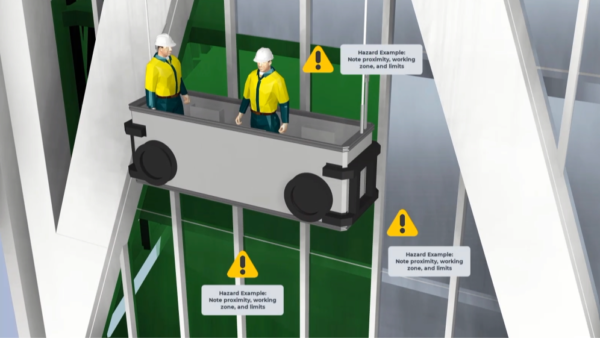
Can you use the Information Delivery Specification (IDS) to replace COBie checks? Vitalij Tetervov of yBIM investigates.
In short, no. But suppose you have learnt a thing or two about COBie in the last decade. In that case, you probably know that COBie requirements are split into two main stages – design and construction (although in the UK, we go nuts and create more information exchanges to align deliverables normally with RIBA stages).
The design information is usually picked up by designers modelling information in BIM authoring tools such as Revit and Archicad.
The information captured in the design software is pretty basic. We need to know information about the facility, how many floors it has, how many spaces are on each floor and how those spaces are grouped into zones, if any. Then, we gather information about maintainable assets, which are grouped by type, split by components and may be part of the system. We also need to know which space those assets are maintained from. Most of the data about types and components are represented through properties, attributes and classifications, which are pretty easily captured in IDS.
Let’s examine a COBie.Type workbook against IDS. It’s not complete, but it will give you a flavour. Note that manufacturer and warranty information is not typically delivered in IFC-SPFF or at the design stage. This table is for illustration only.
| COBie.Type | IDS Facet | IDS Restrictions | Example |
| Name | Attribute | Regex for specific naming conventions, if needed | [a-zA-Z0-9]+_[a-zA-Z0-9]+_[a-zA-Z0-9]+ |
| Category | Classification | Enumeration or regex | Pr.* |
| Description | Attribute | ||
| AssetType | Property | Enumeration | Fixed, Moveable |
| Manufacturer | Property | Regex to check e-mail or n/a | ^(?:[a-zA-Z0-9._%+-]+@[a-zA-Z0-9.-]+\.[a-zA-Z]{2,}|n/a)$ |
| ModelNumber | Property | ||
| WarrantyGuarantorParts | Property | Regex to check e-mail | ^(?:[a-zA-Z0-9._%+-]+@[a-zA-Z0-9.-]+\.[a-zA-Z]{2,}|n/a)$ |
| WarrantyDurationParts | Property | Regex to check the date format | \d{4}-\d{2}-\d{2}T\d{2}:\d{2}:\d{2} |
| WarrantyDurationUnit | Property | Enumeration | Day, Month, Year etc. |
| ReplacementCost | Property | ||
| DurationUnit | Property | Enumeration | Day, Month, Year etc. |
| WarrantyDescription | Property | ||
| NominalLength/ Width/ Height | Potentially through Attribute or Property | ||
| ModelReference etc. | Property | Restrictions may be applied for value to match ‘n/a’ or ‘0’ |
While IDS matches quite a few parameters and even enhances the standard COBie checks, it fails to check unique names. This is a limitation, but I hope it gets included in the next IDS version.
Enhanced verification
There are other aspects of COBie where IDS could be applied using facets such as PartOf. For example, you may check that all spaces are in zones, or that all maintainable components are part of spaces. Through the entity facet, it becomes straightforward to filter out all IFC entities that are excluded from COBie, so you are not checking for COBie data in walls, structural elements or ducts.
It is also quite simple to set up IDS to check specific properties and allowed values, such as fire or acoustic rating, that apply to doors, for example. Furthermore, you may enhance the verification to match exact values for names, descriptions, etc – something that is way beyond basic COBie checks.
There are parts of COBie where IDS is not applicable. For example, take COBie’s contacts. Numerous contacts on the job are not captured in the design model. Another example would be construction stage information, such as manufacturer, warranty, barcode, spare information, etc.
This information would be better collected in a database and then checked by applying COBie rules. While IDS documentation says that IDS may be applied elsewhere, the structure is based around IFC. I’ve yet to see cases where IDS is used outside the IFC schema.
All in all, I’d say IDS can be configured to meet 90% of the design stage COBie requirements. Yet, how the specifications are defined and aligned to the software used on the project may become a bit complex. Nevertheless, it is great to see that some elements of information checking can be passed back to information authors using various software solutions.
Also, if this is too much, get in touch, and I can show you some great examples.
Don’t miss out on BIM, information management and digital construction news: sign up to receive the BIMplus newsletter.












